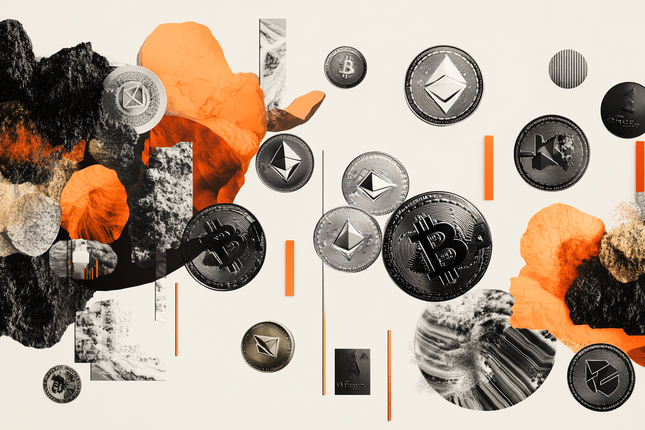In the evolving landscape of financial markets, artificial intelligence (AI) has transcended its initial role as a tool for efficiency and analysis. Today, it is actively shaping strategies, executing trades, and even redefining how financial intelligence is perceived.
Among the various branches of AI, Reinforcement Learning (RL) stands out as one of the most transformative and disruptive technologies.
Reinforcement Learning is not merely about pattern recognition or forecasting. Reinforcement Learning is about enabling machines to:
-
Make complex decisions.
-
Learn from the decisions they made.
-
Improve without explicit human instructions.
As RL-driven systems grow more sophisticated and autonomous, a fundamental question must be addressed: Are live markets, regulatory frameworks, and financial professionals prepared for the rise of truly autonomous traders?
What is reinforcement learning in trading?
Reinforcement Learning is a type of machine learning inspired by behavioral psychology. It functions on a feedback mechanism where an agent learns to take actions in an environment in order to maximize a reward. In the context of trading, this environment is the financial market.
The agent learns through continuous interaction:
-
Observing market movements.
-
Taking positions.
-
Adjusting strategies based on the results.
Unlike supervised learning, which relies on labeled datasets, RL does not need a predefined outcome. Instead, Reinforcement Learning (RL):
-
Explores possible actions.
-
Evaluates the impact of actions.
-
Over time, converges on strategies that optimise performance.
This makes RL ideal for dynamic environments like trading, where market conditions shift rapidly and rules are rarely fixed. In this setup, the RL agent essentially becomes a self-learning trader, refining its strategy with every market tick.
Applications already in motion
What once seemed theoretical is now a growing part of the institutional and retail trading landscape. Leading quantitative hedge funds and high-frequency trading (HFT) firms have integrated RL into their models to navigate ultra-fast market microstructures.
In crypto markets, decentralized autonomous bots are increasingly relying on RL to:
-
Dynamically adjust positions.
-
Hedge exposures.
-
Capitalize on arbitrage opportunities across exchanges.
Beyond short-term trades, RL is also reshaping Portfolio Optimization. A notable example is BlackRock’s Aladdin platform, which incorporates reinforcement learning principles to optimize multi-asset portfolios under changing market regimes. These systems learn how to rebalance allocations in real-time by factoring in drawdown probabilities, Sharpe ratios, and macro indicators.
In Wealth Management, companies like Schroders and Wealthfront are experimenting with RL-based models to create hyper-personalized portfolios. These systems simulate thousands of market paths and behavioral scenarios to tailor asset mixes to individual client goals and risk tolerances.
FinTech startups like Numerai and Qraft Technologies are bringing RL-driven ETFs and trading models to broader audiences, while institutions like JPMorgan Chase and Point72 are building proprietary RL research divisions.
Why traders should care
Reinforcement Learning represents a profound leap in trading methodology because it introduces a self-correcting learning loop into financial decision-making.
Rather than adhering to fixed rules or relying solely on historical backtests, RL agents evolve with the market. This means they can recognize when a strategy no longer works and adapts in real-time. This capability is essential in today’s fragmented and fast-moving markets. The advantages of Reinforcement Learning are multifaceted:
Adaptability
Reinforcement Learning systems respond to:
-
Shifting volatility regimes.
-
Liquidity patterns.
-
Behavioral anomalies without requiring manual intervention.
Example: During the 2022 UK gilt crisis triggered by the mini-budget, several funds using RL-like adaptive strategies adjusted their positions more swiftly than discretionary managers, limiting drawdowns.
Learning from failure
Mistakes become part of the training. Every loss teaches the system, which recalibrates and improves over time.
Example: In crypto trading, where volatility is extreme, some bots have learned to stop over-trading post-news events after accumulating consistent losses during sudden reversals. These behavioral patterns were corrected autonomously.
Strategic exploration
Reinforcement Learning can uncover unconventional but effective strategies by exploring options human traders may overlook or dismiss due to bias or inertia.
Example: In FX trading, some RL agents have discovered short-term profitable microstructure strategies in currency pairs like USD/MXN and USD/TRY – pairs often overlooked by traditional models due to higher volatility and lower liquidity.
For traders, the implication is clear:
- Reinforcement Learning may become a powerful partner, or competitor, in generating Alpha.
Risks and challenges
Despite its promise, Reinforcement Learning in live markets carries non-trivial risks that must be acknowledged and addressed.
- Compliance and explainability
Reinforcement Learning agents often function as black boxes, making decisions that are difficult to interpret or audit. This creates challenges in understanding how a decision was made and whether it complies with internal risk limits or regulatory obligations.
Example: In 2021, a leading Asian investment firm had to suspend an RL-based fund because compliance teams couldn’t explain how trade clustering during an earnings season occurred, raising concerns with auditors.
- Reaction to shocks or crises
RL systems trained in controlled simulations may be overfit to those environments and fail in live market extremes like geopolitical shocks or liquidity crises.
Example: During the March 2020 COVID-induced crash, some RL strategies trained on pre-2020 data were caught off guard by simultaneous liquidity drains in multiple asset classes, triggering cascading losses.
- Herding risk
If multiple Reinforcement Learning systems converge on similar strategies, their simultaneous reactions to market events could amplify volatility, trigger flash crashes, or distort pricing.
Example: Analysts noted that some of the 2018 VIX spike was partially exacerbated by volatility-linked products (many algorithmically driven) simultaneously adjusting positions, resulting in a feedback loop.
- Accountability
The ethical implications of allowing autonomous systems to trade billions in capital raise questions of accountability. If an RL system misfires, who bears the responsibility: the developer, the firm, or the algorithm itself?
As trading decisions become increasingly machine-led, the lines of accountability grow blurred, raising serious ethical and operational concerns for regulators and institutional investors alike.
The human-AI symbiosis
Rather than aiming for full autonomy, the more sustainable and responsible approach lies in a hybrid model of human-AI collaboration.
In this hybrid model of human-AI collaboration, human traders and analysts focus on:
-
High-level reasoning.
-
Macro interpretation.
-
Ethical oversight.
In the same hybrid model of human-AI collaboration RL systems handle:
-
Execution.
-
Optimization.
-
Micro-level pattern recognition.
Example: At Bridgewater Associates, macroeconomic analysts work in tandem with machine learning systems to translate thematic views (e.g., inflation persistence) into systematic trades. The RL agent then determines the best timing and exposure adjustments.
This ensures that the best of both worlds is preserved:
-
Human judgment and domain knowledge.
-
Machine precision and adaptability.
The interaction is not additive—it is synergistic:
-
Humans provide context that machines cannot grasp
-
Machines offer insights and efficiencies beyond human capacity.
Hybrid models also enhance transparency and regulatory compliance, enabling firms to maintain investor trust two non-negotiable pillars in global finance.
Toward a new trading paradigm
Reinforcement Learning is not a passing trend. It is a foundational shift in how financial markets operate.
As AI systems learn, evolve, and execute autonomously, the nature of market participation is changing. While we are not yet in a world fully dominated by AI traders, we are certainly moving in that direction.
The question is no longer whether these systems will participate in markets, but how we design the infrastructure, ethics, and oversight that surround them.
-
Are we building guardrails that ensure stability and fairness?
-
Or are we accelerating toward a future we do not yet understand?
Reinforcement Learning opens the door to unprecedented strategic intelligence, but with it comes a responsibility:
-
To lead, not just follow.
-
To remain adaptive, but also accountable.
The age of autonomous trading has begun. Whether we master it or are mastered by it, depends on the choices we make today.
CFDs are complex instruments and come with a high risk of losing money rapidly due to leverage. You should consider whether you understand how CFDs work and whether you can afford to take the high risk of losing your money. The Article/Information available on this website is for informational purposes only, you should not construe any such information or other material as investment advice or any other research recommendation. Nothing contained on this Article/ Information in this website constitutes a solicitation, recommendation, endorsement, or offer by LegacyFX and A.N. ALLNEW INVESTMENTS LIMITED in Cyprus or any affiliate Company, XE PRIME VENTURES LTD in Cayman Islands, AN All New Investments BY LLC in Belarus and AN All New Investments (VA) Ltd in Vanuatu to buy or sell any securities or other financial instruments in this or in in any other jurisdiction in which such solicitation or offer would be unlawful under the securities laws of such jurisdiction. LegacyFX and A.N. ALLNEW INVESTMENTS LIMITED in Cyprus or any affiliate Company, XE PRIME VENTURES LTD in Cayman Islands, AN All New Investments BY LLC in Belarus and AN All New Investments (VA) Ltd in Vanuatu are not liable for any possible claim for damages arising from any decision you make based on information or other Content made available to you through the website, but investors themselves assume the sole responsibility of evaluating the merits and risks associated with the use of any information or other Article/ Information on the website before making any decisions based on such information or other Article.
Editors’ Picks

Gold retreats from record highs on solid US growth
Gold prices soared to $4,497 on Monday, as persistent US Dollar weakness and thinned holiday trading exacerbated the bullish run. The bright metal eases following the release of an upbeat US Q3 GDP reading, but overall, the report is doing little for the Greenback.

EUR/USD eases from around 1.1800 after US GDP figures
The US Dollar is finding some near-term demand after the release of the US Q3 GDP. According to the report, the economy expanded at an annualized rate of 4.3% in the three months to September, well above the 3.3% forecast by market analysts.

GBP/USD retreats below 1.3500 on modest USD recovery
GBP/USD retreats from session highs and trades slightly below 1.3500 in the second half of the day on Tuesday. The US Dollar stages a rebound following the better-than-expected Q3 growth data, limiting the pair's upside ahead of the Christmas break.

Crypto Today: Bitcoin, Ethereum, XRP decline as risk-off sentiment escalates
Bitcoin remains under pressure, trading above the $87,000 support at the time of writing on Tuesday. Selling pressure has continued to weigh on the broader cryptocurrency market since Monday, triggering declines across altcoins, including Ethereum and Ripple.

Ten questions that matter going into 2026
2026 may be less about a neat “base case” and more about a regime shift—the market can reprice what matters most (growth, inflation, fiscal, geopolitics, concentration). The biggest trap is false comfort: the same trades can look defensive… right up until they become crowded.
RECOMMENDED LESSONS
Making money in forex is easy if you know how the bankers trade!
I’m often mystified in my educational forex articles why so many traders struggle to make consistent money out of forex trading. The answer has more to do with what they don’t know than what they do know. After working in investment banks for 20 years many of which were as a Chief trader its second knowledge how to extract cash out of the market.
5 Forex News Events You Need To Know
In the fast moving world of currency markets where huge moves can seemingly come from nowhere, it is extremely important for new traders to learn about the various economic indicators and forex news events and releases that shape the markets. Indeed, quickly getting a handle on which data to look out for, what it means, and how to trade it can see new traders quickly become far more profitable and sets up the road to long term success.
Top 10 Chart Patterns Every Trader Should Know
Chart patterns are one of the most effective trading tools for a trader. They are pure price-action, and form on the basis of underlying buying and selling pressure. Chart patterns have a proven track-record, and traders use them to identify continuation or reversal signals, to open positions and identify price targets.
7 Ways to Avoid Forex Scams
The forex industry is recently seeing more and more scams. Here are 7 ways to avoid losing your money in such scams: Forex scams are becoming frequent. Michael Greenberg reports on luxurious expenses, including a submarine bought from the money taken from forex traders. Here’s another report of a forex fraud. So, how can we avoid falling in such forex scams?
What Are the 10 Fatal Mistakes Traders Make
Trading is exciting. Trading is hard. Trading is extremely hard. Some say that it takes more than 10,000 hours to master. Others believe that trading is the way to quick riches. They might be both wrong. What is important to know that no matter how experienced you are, mistakes will be part of the trading process.
The challenge: Timing the market and trader psychology
Successful trading often comes down to timing – entering and exiting trades at the right moments. Yet timing the market is notoriously difficult, largely because human psychology can derail even the best plans. Two powerful emotions in particular – fear and greed – tend to drive trading decisions off course.
